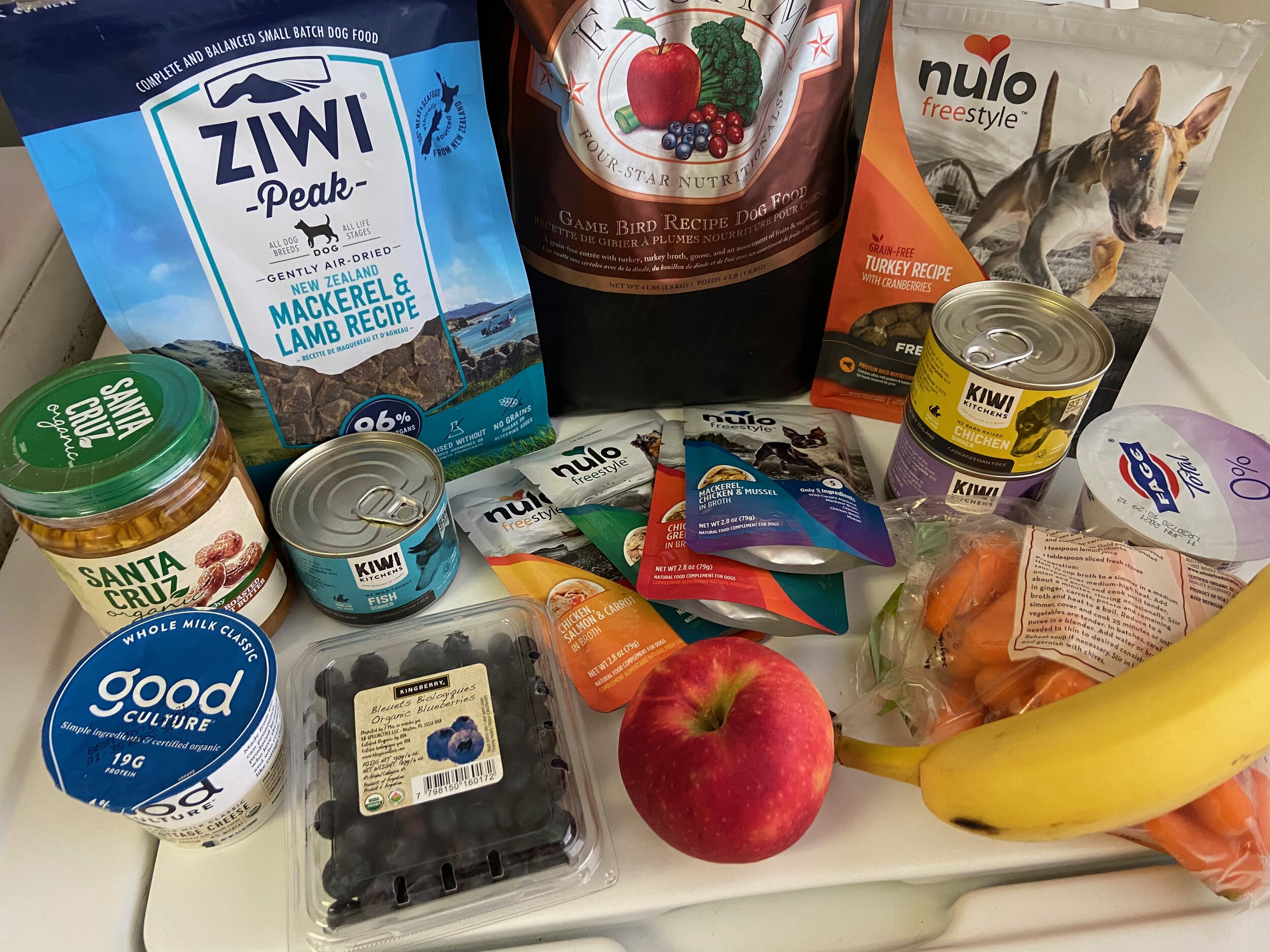Keep it Healthy: Food for Training and Enrichment
So you’ve embraced using food in training (woohoo!). How do you keep food based enrichment and reinforcement healthy, especially for a pup who is currently receiving a higher than average quantity or who is prone to getting a little hefty?
1. Tell pre-packaged dog treats that contain a lot of fillers you need to see other snacks. A lof of food items sold as dog treats fail the sniff test on a few fronts: they aren't that healthy and contain a lot of stuff your dog doesn’t need as part of their diet, they are expensive for quantity/quality, they’re too large and can be harder to break into small pieces, and they aren't all that high value.
So what to use instead? For our higher value food rewards, the easiest way to keep it healthy is to use fresh meats. Food rolls like Pet Deli or Fresh Pet can also be good options. If you need to keep it super lean, bake or boil some plain turkey, chicken, or fish. Otherwise, experiment to see what your pup likes and keep it interesting!
We also love using the endless varieties of food toppers and mix ins now available - Nulo, The Honest Kitchen, and Stella & Chewy's all make great ones. And high quality dehydrated foods like Ziwi Pets or Kiwi Kitchens make excellent more exciting than kibble treats. Speaking of kibble, you can also use kibbles more novel and exciting in flavor than what your pup gets for meal time. Does your dog love fruits or veggies? Mix 'em into your training bag and create some healthy doggie trail mix!
2. Control quantity by using smaller pieces. If you are working on a behavior like reactivity where your dog may need high frequency food delivery for portions of the walk, make sure you are using small pieces. Dogs are more excited to work for smaller pieces of the good stuff than larger pieces of the just okay stuff and we don't need big chunks to achieve the effects we're looking for. In fact, small and easily chewable bits are usually more effective for high frequency treating anyway!
3. Spread the same volume of food over multiple puzzle toys. For some of our high intensity pups and particularly those working through arousal issues, they may be getting multiple puzzle toys a day. Does that mean we are filling every puzzle toy to the top? Nope! For meal time puzzle feeding, we typically do about 1/3 in a dish to let the pup eat for satiation and then the rest spread out across puzzle toys.
4. Go healthy on your puzzle toy fillings. For dry fillings, see #1 and don't be afraid to mix those more exciting goodies in with your dog's meal time kibble to stretch it even further.
For wet puzzle toy fillings, we love wet food, plain non or low fat yogurt or cottage cheese, fresh fruits, veggies, & meats, plain unsweetened applesauce, plain unsweetened pumpkin or sweet potato, bone broth, and any combo of those that seem exciting. We're also big fans of the limited ingredient wet food packets like those made by Nulo. We do use plain, unsweetened nut butters but very sparingly. In fact we do "nut butter cups" (usually in the WEST PAW Toppl!) with fresh fruit mix ins only once a month over here. And of course, don't forget to pop them in the freezer to make 'em last longer!
5. And finally, budget for a healthy calorie allotment when thinking about what your dog’s training, enrichment, and meal times will look like. If you use a lot of calories during a training session, trim down the amount of filling that goes in your puzzle toys later or trim a bit of your dog’s dinner portion for the day. Adjust those portions as needed and adjust your fillings and training treats as needed to find what works best for your pup. And if you’re having trouble, ask your trainer and/or your vet for help!
Still on the fence about why you should use food in dog training? Read on.

